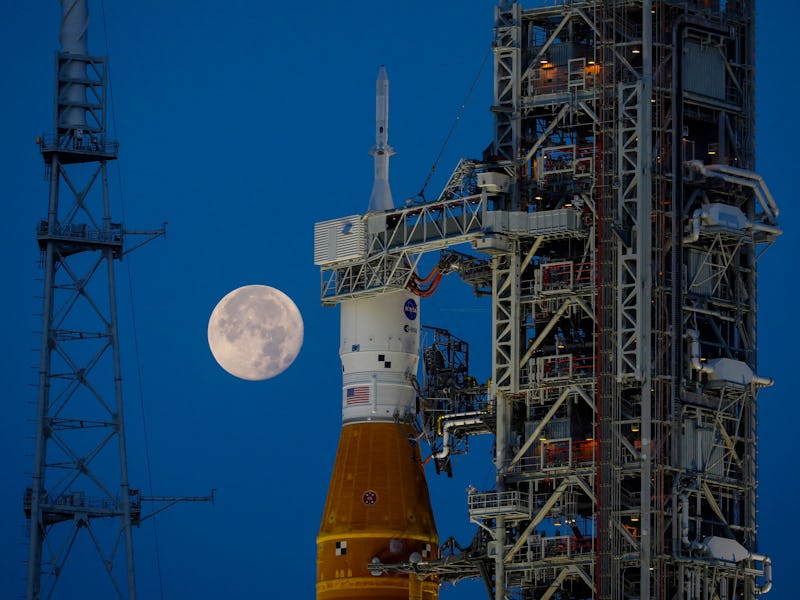The Artemis I Moon mission finally has a launch window — NASA
Celebrate the end of summer with a lunar event like no other... maybe.

On Wednesday, July 20, 1969, Apollo 11 astronauts Neil Armstrong and Buzz Aldrin stepped onto the Moon. Flash forward 53 years, and NASA has used the anniversary to announce tentative launch dates for the first major stage of a mission designed to put human boots on the Moon again.
The Artemis I mission is supposed to fly a Space Launch System rocket with an uncrewed Orion capsule on top toward the Moon, conduct a series of in-flight tests, and then go through the trial of re-entry into Earth’s atmosphere to see if Orion can survive the descent.
Now, after a slew of delays, NASA claims the Artemis I mission will likely launch on one of these dates:
- Monday, August 29, 2022
- Friday, September 2, 2022
- Monday, September 5, 2022
During this week-long window, it is possible skywatchers can catch the Artemis I vehicle finally blasting off from Launchpad 39B at the NASA Kennedy Space Center. NASA launched Apollo 17, the final Apollo lunar mission, from the same launchpad in 1972.
In a news conference to announce the dates, Jim Free, associate administrator for Exploration Systems Development of NASA, said “we think we’re on a good path to get to attempts on those dates.”
“Of course, it’s the first time we’re trying to launch this vehicle, so I heard the deputy administrator today tell her family that when they come for the launch plan a seven-day vacation to Florida, and you might see a launch in there too,” he added.
Why is Artemis I still grounded?
Artemis 1, if it launches, will take a path like this to the Moon.
Free’s caution stems in part from a series of stumbles delaying the successful completion of Artemis I’s “wet” dress rehearsal, which involves filling the rocket with fuel and practicing a countdown.
The first attempts at a rehearsal took place in April, yet the vehicle didn’t pass this critical stage of review until its fourth attempt on June 21.
Free says the Artemis team can now work hard and meticulously to “do our best to position ourselves to have the confidence in those dates.”
If it does launch at the end of summer, then once airborne, the rocket will be remotely controlled by NASA. On the Orion capsule, a dummy called Captain Moonikin will stand in for the real astronauts. If all goes to plan, the rocket will head toward the Moon and run through staging, as well as testing the hardware aboard the Orion capsule.
Artemis I will then return to Earth, where it will need to pass a huge test: Earth re-entry. The capsule will enter the atmosphere at more than 25,000 miles per hour, reaching temperatures half as hot as the Sun. That will prove whether or not Orion is ready to survive the mission — or if parts of its design need to go back to the drawing board.
If Artemis I succeeds, then NASA can begin to prep for Artemis II, which has a tentative launch date in the spring of 2024. This mission will take astronauts on a flyby trip to the Moon and then return to Earth. It sets the stage for Artemis III, which will put boots on the Moon again — including the first woman and first person of color — with a tentative launch date sometime in 2025. All of these dates are subject to delay.
Ultimately, NASA has ambitions to establish a permanent human presence on the South Pole of the Moon, where the vital resource water survives as ice.
All of this rides on the success of the Artemis I mission.
“This is our first flight, and this is our campaign we’re building,” Free said.